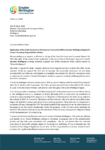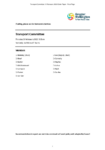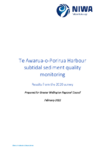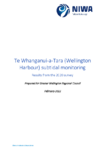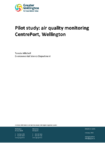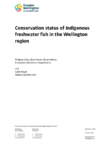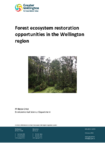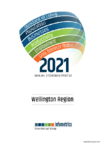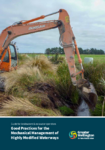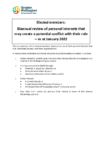-
-
Te Awarua-o-Porirua Harbour Subtidal Monitoring – Results from the 2020 Survey
alarm Published 02 Feb 2022 -
Te Whanganui-a-Tara (Wellington Harbour) Subtidal Monitoring – Results from the 2020 Survey
The 2020 sediment survey of Te Whanganui-a-Tara (Wellington) Harbour showed that bottom sediments were very muddy (69-96% mud) at 14 of the 15 subtidal sites sampled. Only southern Evans Bay…
alarm Published 01 Feb 2022 -
Pilot Study: Air Quality Monitoring - CentrePort, Wellington
Air quality monitoring during summer and autumn in 2019/2020 found that although measured levels of sulphur dioxide (SO2), nitrogen dioxide (NO2) and particulate matter were higher at the CentrePort monitoring…
alarm Published 01 Feb 2022 -
Conservation status of indigenous freshwater fish in the Wellington region
The conservation status of the indigenous fish species in the Wellington region has been assessed by an expert panel. Twenty-two indigenous freshwater fish were identified as being present in the…
alarm Published 01 Feb 2022 -
Forest ecosystem restoration opportunities in the Wellington region
Opportunities for increasing the extent of threatened forest ecosystems in the Wellington region are detailed in the report. Many of these opportunities exist in areas where restoring forest habitat will…
alarm Published 01 Feb 2022 -
Wellington Regional Annual Economic Profile 2021
Infometrics produce an annual economic profile for the region, this covers a range of analysis including employment, productivity and standards of living at a regional level.
alarm Published 31 Jan 2022 -
Good Practices for the Mechanical Management of Highly Modified Waterways
The highly modified rivers and streams that make up drainage networks are often thought to be of little ecological value. This is due to their “unappealing” appearance, the intensively developed…
alarm Published 31 Jan 2022 -
Elected members: Biannual review of personal interests that may create a potential conflict with their role – as at January 2022
This is a summary of the elected members’ biannual review of their personal interests that may potentially intersect with their responsibilities.
alarm Published 31 Jan 2022
